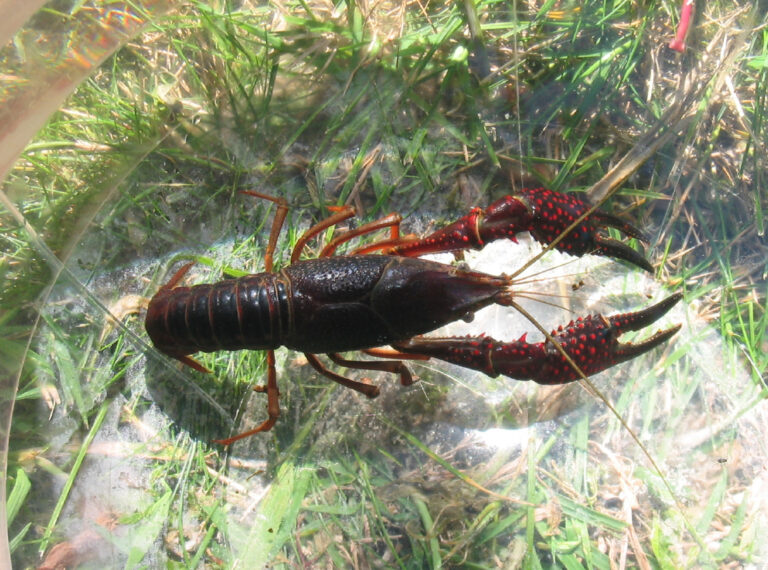Historic Aquatic Creek Fauna and the Return of Native Shellfish and Crustaceans
Habitat and water-quality improvements made to stretches of the San Antonio River and San Pedro Creek have proved to be extremely beneficial.
English
Español
-
Habitat and water-quality improvements made to stretches of the San Antonio River and San Pedro Creek have proved to be extremely beneficial. As populations of aquatic species recover and grow, they become parent populations to generations found to be migrating upstream into San Pedro Creek and other promising new habitats. One of the most studied groups of organisms in freshwater restoration projects across America is the freshwater mussel. Like other bottom feeders, they accumulate toxins that can be measured and analyzed. Mussels provide for improved water quality as each mussel filters 10 to 18 gallons of water a day, removing algae, zooplankton, suspended particles, toxins, and even bacteria like E. coli. Groups of mussels live together in beds that also house a variety of small aquatic species. Additionally, once deceased, mussels’ empty shells provide shelter for crawfish, snails, and plants, as well as nesting sites for fish.
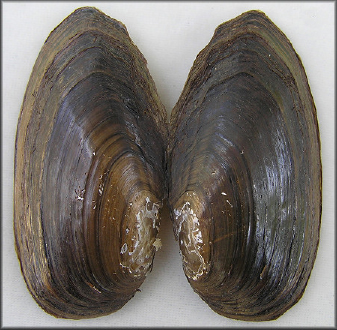
Courtesy: https://www.jaxshells.org. Paper Pondshell Mussel (Utterbackia imbecillis): This mussel has a thin, oblong shell ranging up to 4 inches in length. It constantly filters water and sediment to feed on algae, decaying organic matter, and excess nutrients. While fairly tolerant, its ability to thrive declines with degraded water quality, making its presence an indicator of habitat health.
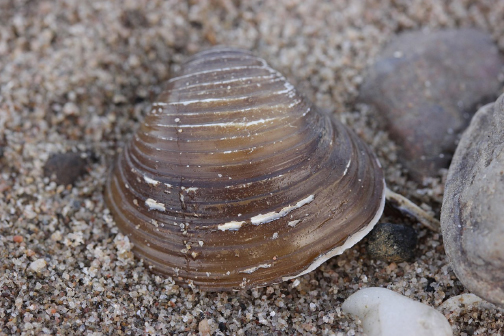
Courtesy: Wikimedia Commons (CC SA-BY 2.0). Asian Clam (Corbicula fluminea): This small non-native bivalve exhibits a classic clamshell, marked by distinct concentric ridges. The Asian Clam is a self-fertilizing species that rapidly reproduces and also serves as a food source for native fish (such as Channel Catfish) and crawfish. As a filter feeder, it removes particles from the water while nestled in sediment. In larger bodies of water, large groups of these clams can become invasive.
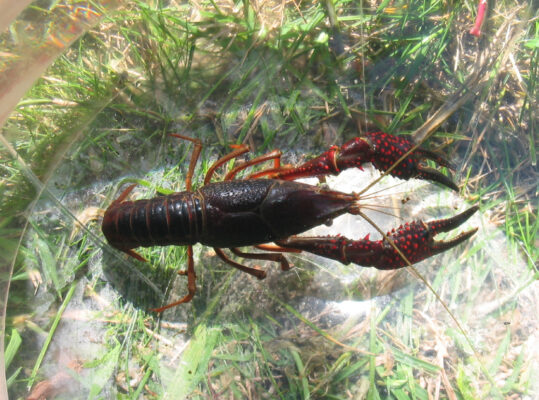
Photo: Duloup; Courtesy: Wikimedia Commons (CC BY-SA 3.0). Crawfish/Crayfish (Procambarus clarkii): These bottom feeders eat a wide variety of plant life and decomposing organic matter, including invertebrates. They prefer habitats of dense, tender vegetation, and they spawn in the fall with the return of predictable rains. Adults adapt to droughts by burrowing deep into mud.
-
Las mejoras del hábitat y la calidad del agua realizadas en tramos del San Antonio River y San Pedro Creek han demostrado ser extremadamente beneficiosas. A medida que las poblaciones de especies acuáticas se recuperan y crecen, se convierten en poblaciones progenitoras de generaciones que migran río arriba hacia San Pedro Creek y otros hábitats nuevos y prometedores. Uno de los grupos de organismos más estudiados en proyectos de restauración de agua dulce en todo Estados Unidos es el mejillón de agua dulce. Al igual que otros organismos que se alimentan en el fondo, acumulan toxinas que pueden medirse y analizarse. Los mejillones proporcionan una mejor calidad del agua ya que cada mejillón filtra de 10 a 18 galones de agua al día, eliminando algas, zooplancton, partículas suspendidas, toxinas e incluso bacterias como la E. coli. Los grupos de mejillones viven juntos en lechos que también albergan una gran variedad de pequeñas especies acuáticas. Además, una vez fallecidos, las conchas vacías de los mejillones sirven de refugio a langostas, caracoles y plantas, así como de sitios de anidamiento para los peces.

Courtesy: https://www.jaxshells.org. Mejillón Paper Pondshell (Utterbackia imbecillis): Este mejillón tiene una concha delgada y rectangular que mide hasta 4 pulgadas de largo. Filtra constantemente agua y sedimentos para alimentarse de algas, materia orgánica en descomposición y exceso de nutrientes. Aunque es medio tolerante, su capacidad de prosperar disminuye con la calidad del agua degradada, por lo que su presencia es un indicador de la salud del hábitat.

Courtesy: Wikimedia Commons (CC SA-BY 2.0). Almeja Asiática (Corbicula fluminea): Este pequeño bivalvo no autóctono presenta una concha clásica, caracterizada por distintas crestas concéntricas. La almeja asiática es una especie autofecundante que se reproduce rápidamente y también sirve como fuente de alimento para peces autóctonos (como el bagre de canal) y cangrejos de río. Se alimenta por filtración, eliminando partículas del agua mientras está anidada en el sedimento. En masas de agua más grandes, grandes grupos de estas almejas pueden convertirse en invasoras.

Photo: Duloup; Courtesy: Wikimedia Commons (CC BY-SA 3.0). Cangrejo de río (Procambarus clarkii): Estos organismos que se alimentan en el fondo consumen una gran variedad de plantas y materia orgánica en descomposición, incluidos invertebrados. Prefieren hábitats con vegetación densa y tierna, y se reproducen en otoño con el regreso de las lluvias predecibles. Los adultos se adaptan a las sequías excavando profundamente en el lodo.
Creek Quiz
What materials found along the creek were the settlers’ rustic jacales (houses) made from?
Wood, mud, straw.
